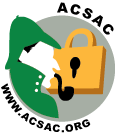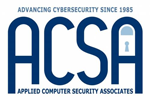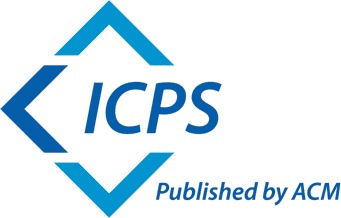2018 Annual Computer Security Applications Conference
Call for Professional Development Course Proposals
- When are training proposals due?
- Professional Development Course proposals are due no later than start of business, Pacific time, June 15 Instructors will be notified of Acceptance/Rejection by July 19.
- What is training, and how does it differ from a paper or panel?
- An ACSAC training course is a full-day (6 instruction hours) or a half-day (3 instruction hours) class whose goal is to teach about some aspect of Computer Security. ACSAC courses may be tutorial (introductory) in nature or they may be designed for a more advanced audience.
An ACSAC training course is not:
- A report on your research.
- A general course on Computer Science.
- A attempt to market your product.
ACSAC training courses do not typically include "hands-on" activities for students; however, such activities will be considered provided logistics can be worked out.
- What are good training course topics?
- Many topics are suitable for ACSAC training courses. The best courses, however, relate either to technology areas or techniques. Extremely narrow topics, such as VMS security, are probably not appropriate for a broad conference such as ACSAC. See the following topics list for ideas.
- What do I need to have ready for course submission?
- Unlike papers, the course does not need to be completely developed as of the time of submission. However, there must be a relatively firm outline of the course, including preliminary allocations of how time is to be allocated to each section of the course. A preliminary identification of a textbook is useful, but not required, at the time of submission. Course proposals should make very clear the technical background expected. A course on the security aspects of the X-technology should devote no more than 10% of the time to reviewing X-technology only insofar as necessary to establish a common basis for the discussion of security. You do not need to provide a general computer security overview.
- How do I structure a course submission?
- Course submissions are handled very differently than are papers or panel proposals. Most, if not all, course submissions will be reformatted by the Course Chair into a package that goes to course reviewers. Your cooperation in structuring your course submission properly is key.
Course submissions should have the following structure:
- Title of the course
- Indication of the desired length of the course
- One to two paragraphs of introductory text about the course.
- Identification of any prerequisites for the course
- Identification of any textbooks for the course
- One to two pages of outline for the courses. The main section level should provide rough time estimates.
- Identification of the author of the course, including contact information (mailing address, email, fax)
- One to two paragraphs of biographical information about the instructor.
- How do I submit a course proposal?
- Courses should be submitted electronically to the address training@acsac.org. If for some reason this address does not work, submit them directly to faigin@aero.org.
Tutorials may be submitted in almost any format; the preferred formats are Adobe Acrobat (PDF), Microsoft Word (RTF, DOC or DOCX), Corel WordPerfect (WPD), or OpenOffice/LibreOffice (ODT). Plain text is also accepted. LaTeX is not an acceptable format.
- Are Instructors Compensated?
- Under the current structure, instructors receive an honorarium to teach ACSAC courses ($1000 half-day, $2000 full-day for 10 or more students; half that amount for under 10 students). Instructors also have travel expenses (airfare, and 1 or 2 nights of hotel) covered. Registration for the technical portion of the conference is not included. Note that discussions are currently ongoing about changing this structure--this may include moving to a per-head payment as an alternative to the fixed honorarium and including registration for the technical portion of the conference instead of covering travel. Thoughts on this change should be sent to the Professional Development Courses Chair.
- What happens if my course is accepted?
- If your course is accepted, here's what you can expect.
- With the acceptance letter, you will receive a contract for the course. This contract will detail how much you will get paid, and for what you will get reimbursed. You will need to return this contract to ACSA ASAP. You will need to have a US Taxpayer identification number.
- By mid-August, you will need to provide an updated version of the course proposal for the Advance Program. For this, it is critical that the course be described accurately, any prerequisites be noted, and the outline be correct.
- By 60 days before the conference, you will need to provide one hour's worth of material to the course chair for review. At this time, you will also need to identify any textbook you will be using, or if you are providing papers instead, identify the relevant papers. Note that if you provide papers, you are responsible for obtaining copyright clearance.
- By 30 days before the conference, you will need to provide the entire course to the course chair. If papers are being provided, you'll need to provide copies of those papers.
You will be responsible for arranging your travel to the conference, although this will be reimbursed as indicated in your course contract.
Non-native English speakers are encouraged to dry run your course before you present it at the conference (in fact, this is good advice for anyone giving a presentation).
Courses that are not accepted, at the discretion of the course chair, may be referred to the coordinator of the ACSAC Workshop, which is presented as part of the conference. Often, the course topics serve as good roundtable discussion topics.
- Who do I contact for more information?
- If you have any questions on the course program or the course submission process, please contact the Professional Development Courses Chair.








